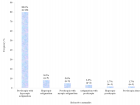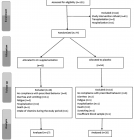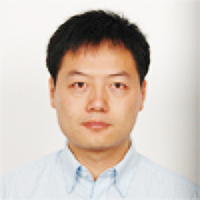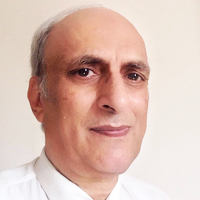Table of Contents
Preliminary Report on the Effect of Mesenchymal Stem Cell Therapy in Patients with Chronic Lung Allograft Dysfunction
Published on: 28th August, 2018
OCLC Number/Unique Identifier: 7844548189
Background: Mesenchymal stem cell (MSC) effects can shift immune responses toward anti-inflammatory and tolerogenic phenotypes, potentially helping patients with bronchiolitis obliterans syndrome (BOS).
Methods: We evaluated the effect of infusing allogeneic MSC intravenously in 9 patients with moderate BOS refractory to standard therapy who were not candidates for retransplant, dividing them into 3 dosing groups: Group 1, 1×106 MSC/kg (n=3); Group 2, 2×106 MSC/kg (n=3); and Group 3, 4×106 MSC/kg (n=3). We recorded pulmonary function tests, laboratory variables, and serum biomarkers pre- and post-MSC infusion.
Results: These patients had significant decline in forced vital capacity (FVC) and forced expiratory volume in 1 second (FEV1) over 1 year pre-MSC infusion (mean ± SD) FVC, 3.11±0.98 L, and FEV1 1.99+0.64 L versus FVC 2.58±1.03 and FEV1 1.61±0.52 just before infusion (P<0.05); representing a mean loss of 530 mL in FVC and 374 mL in FEV1 over 12 months. One year post-MSC infusion, mean FVC and FEV1 increased to 2.66±1.01 L and 1.63±0.55 L, respectively (changes no longer significant compared to before MSC infusion). Patients in Group 1 showed elevation of tolerance-inducing T regulatory cells and increased levels of epidermal growth factor. Tolerance-inducing Th-2 cytokines increased in Groups 1 and 2. These changes were not significantly different in these small sub-groups.
Conclusion: MSC infusion appears to slow down or reverse the progressive decline in lung function in some patients with moderate BOS, possibly by inducing anti-inflammatory effects and promoting cell proliferation and angiogenesis.
A flow perfusion bioreactor with controlled mechanical stimulation: Application in cartilage tissue engineering and beyond
Published on: 13th June, 2018
OCLC Number/Unique Identifier: 7815003397
To repair articular cartilage (AC) defects in osteoarthritic patients, one approach is to engineer three-dimensional grafts with physicochemical properties similar to endogenous AC. Such grafts can be grown in bioreactors that provide environmental conditions favoring chondrogenesis. Studies show mechanical stimulation during the culturing process greatly enhances development of functional engineered grafts. A review of literature on bioreactor options reveals a lack of capacity to simultaneously stimulate cells with a combination of shear stress and oscillating hydrostatic pressure, both of which are important parts of the in vivo AC environment. It is hypothesized that combining both forces in a new bioreactor design will contribute to better AC tissue growth. In this paper, we provide a brief review of bioreactors and describe a new computer-controlled perfusion and pressurized bioreactor system, and the novelty of its control programming features for service in a host of applications. We briefly summarize results on synergistic effects in employing perfusion, oscillating hydrostatic pressure in a scaffold free environment and with the addition of encapsulation for inducing chondrogenesis. We further describe efforts to modify the newly developed system to include a continuous flow and pressurized centrifugal mode to enhance further the capabilities for inclusion of very high shear stresses. Applications for several other cell and tissue engineering approaches are discussed.
Stem cells in patients with heart failure experience
Published on: 20th April, 2018
OCLC Number/Unique Identifier: 7666352115
Between 2003 and 2011, 17 patients with heart failure were treated with stem cells as part of our Foundation’s Regenerative Medicine program. In several centers and countries 4 with ischemic cardiomyopathy of which 3 were surgically implanted with autologous bone marrow stem cells (ABMSC) plus bypass surgery. One patient was treated with hyperbaric medicine plus bypass surgery. Patients with idiopathic cardiomyopathy were implanted surgically with 2 different types of stem cells. Ten patients were implanted with stem cells derived from human fetuses (HFDSCs) and three patients with autologous bone marrow stem cells (ABMSC). The ejection fractions of the coronary artery bypass graft off pump OPCAB (control group) versus coronary artery bypass group off pump OPCAB plus stem cell transplantation were as followsin the entire serie: preoperative, 30.7% +/- 2.5% compared to 29.4% +/- 3.6%; 1 month, 36.4% +/- 2.6% versus 42.1% +/- 3.5%; 3 months, 36.5% +/- 3.0% vs. 45.5% +/- 2.2%; And 6 months, 37.2% +/- 3.4% versus 46.1% +/- 1.9% (p <0.001). The first patient performed at our center in Argentina in this series is alive and asymptomatic 15 years after implantation, and the rest of this series we do not have current data. A patient without visible vessels in the anterior wall of the left ventricle was treated with 18 hyperbaric chamber sections from one hour at 1.4 AT. After creating angiogenesis, the patient was operated on receiving 2 grafts (mammary and venous) without extracorporeal circulation in the anterior descending artery and diagonal artery. The preoperative ejection fraction was 33% at 90 months of follow up the ejection fraction was 58%. The patient at 90 months was asymptomatic. Of the idiopathic heart disease group, nine patients underwent median sternotomy, and received human fetal stem cells (HFDSCs from ectopic pregnancy or spontaneous abortion, three patients received autologous bone marrow stem cells ABMSC) and 1HFDSCs for Minimally Invasive Surgery.
Patients with HFDSC, compared to baseline, improved: The mean (±SD) NYHA class decreased from 3.4 ± 0.5 to 1.33 ± 0.5 (P = 0.001); Mean EF increased 31%, from 26.6% ± 4.0% to 34.8% ± 7.2% (p = 0.005); the yield in ETT increased 291.3%, from 4.25 minutes to 16.63 minutes (128.9% in metabolic equivalents, 2.45 to 5.63) (P <0.0001); the mean LVEDD decreased 15%, from 6.85 ± 0.6cm to 5.80 ± 0.58cm (P <0.001); the mean performance on the 6-minute walk test increased 43.2%, from 251 ± 113.1 seconds to 360 ± 0 seconds (P = 0.01); the mean distance increased 64.4%, from 284.4 ± 144.9m to 468.2 ± 89.8m (P = 0.004); and the mean score in the Minnesota congestive HF test decreased from 71 ± 27.3 to 6 ± 5.9 (p <0.001). Kaplan-Maier’s probability of survival at 40 months was 66%. No rejection or cancer was observed at follow-up, in this series follow-up was discontinued at 4 years. In idiopathic patients receiving autologous cells by Mininvasive technique preoperative NYHA was 3.6 (+/- 0.70) 6 months after receiving stem cell therapy. The mean value of the functional class was 1.9 (+/- 0.90) (p <0.005). ) showing marked clinical improvement. The preimplantation ejection fraction was 28% (+/- 3.6%) and at 6 months 44% (+/- 4.7%) (p <0.005). There was a similar change in ventricular diameters: After 6 months LVESV went from 50mm (+/- 3.3) to 42mm (+/- 4.5) (p <0.05). Two of the three patients in this group received re-synchronization therapy; one died at 10 years and 4 months, another at age 11 and another one alive at 12 years of the implant. More experience should be performed with different techniques and cells to find the appropriate treatment in this type of patients.
Stem cells in heart failure some considerations
Published on: 25th January, 2018
OCLC Number/Unique Identifier: 7325111402
Stem cell treatments depend not only on the type of cell to be used but also on the different implantation techniques. Intravascular cell injections are known to rapidly separate from the vessels. On the other hand, it is also well known that direct injection into the myocardium provides better coupling within the heart muscle. That were the cases of Embriofetal stem cell (HFDSC) or Autologous stem cells (ABMSC) in our experience focused on direct approaches.

HSPI: We're glad you're here. Please click "create a new Query" if you are a new visitor to our website and need further information from us.
If you are already a member of our network and need to keep track of any developments regarding a question you have already submitted, click "take me to my Query."























































































































































